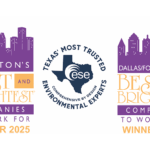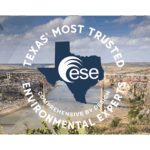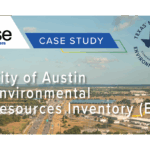
Environmental compliance auditing plays a vital role in promoting sustainable practices and ensuring the protection of our environment. In the city of Tulsa, Oklahoma, a comprehensive approach has been adopted to ensure compliance with local environmental regulations. This article will provide an in-depth understanding of environmental compliance auditing in Tulsa, discussing its definition, importance, key elements, role, process, and challenges faced.
Understanding Environmental Compliance
Before delving into the specifics of Tulsa’s approach to environmental compliance auditing, it is crucial to comprehend the concept of environmental compliance itself.
Definition and Importance of Environmental Compliance
Environmental compliance refers to the adherence to laws, regulations, and standards that aim to protect the environment. It encompasses a wide range of aspects, including air quality, water management, waste management, and hazardous materials handling.
The importance of environmental compliance cannot be overstated. By ensuring compliance, businesses and organizations play a significant role in reducing pollution, conserving natural resources, and minimizing their environmental footprint. Compliance also helps maintain a healthy and sustainable environment for present and future generations.
Key Elements of Environmental Compliance
Environmental compliance is based on several key elements that guide organizations in implementing sustainable practices:
- Legal requirements: Compliance with local, state, and federal regulations is the foundation of environmental compliance.
- Permits and licenses: Organizations must obtain permits and licenses to ensure they meet specific environmental standards.
- Environmental management systems: Implementing systematic approaches to manage and monitor environmental impacts is essential for compliance.
- Training and awareness: Educating employees about environmental responsibilities and providing them with the necessary skills and knowledge are crucial.
- Monitoring and reporting: Regular monitoring of environmental performance and reporting it to relevant authorities is vital for compliance.
Each of these elements plays a critical role in ensuring that organizations are operating in an environmentally responsible manner. Let’s take a closer look at each element:
Firstly, legal requirements form the foundation of environmental compliance. These regulations are put in place to protect the environment and ensure that businesses and organizations are operating within the boundaries set by the law. By complying with these regulations, organizations demonstrate their commitment to environmental stewardship.
Secondly, permits and licenses are essential for organizations to operate in compliance with specific environmental standards. These permits and licenses are obtained through a rigorous process that assesses the organization’s ability to meet environmental requirements. By obtaining these permits and licenses, organizations demonstrate their commitment to meeting and exceeding environmental standards.
Thirdly, environmental management systems provide organizations with a systematic approach to managing and monitoring their environmental impacts. These systems help organizations identify areas where improvements can be made, set goals for environmental performance, and track progress towards those goals. By implementing effective environmental management systems, organizations can continuously improve their environmental performance and ensure compliance with regulations.
Fourthly, training and awareness are crucial elements of environmental compliance. By educating employees about their environmental responsibilities and providing them with the necessary skills and knowledge, organizations empower their workforce to make environmentally responsible decisions. This training and awareness help create a culture of environmental stewardship within the organization.
Lastly, monitoring and reporting are vital for environmental compliance. Regular monitoring of environmental performance allows organizations to track their progress towards environmental goals and identify areas where improvements can be made. Reporting this information to relevant authorities demonstrates transparency and accountability, ensuring that organizations are held responsible for their environmental impact.
In conclusion, environmental compliance is a multifaceted concept that requires organizations to adhere to laws, regulations, and standards aimed at protecting the environment. By incorporating the key elements of environmental compliance into their operations, organizations can play a significant role in creating a sustainable future for all.
The Role of Auditing in Environmental Compliance
Auditing is a fundamental part of the environmental compliance process. It helps organizations assess their environmental performance, identify potential non-compliance issues, and implement corrective measures.
Purpose of Environmental Audits
The primary purpose of environmental audits is to evaluate an organization’s compliance with environmental regulations and identify areas for improvement. Audits provide an unbiased assessment of an organization’s environmental practices, helping it identify weaknesses, rectify deficiencies, and prevent future non-compliance.
Types of Environmental Audits
Environmental audits can be categorized into various types, depending on their scope and objectives:
- Compliance audits: These audits focus on assessing an organization’s compliance with specific environmental regulations and permit conditions.
- Management system audits: They evaluate the effectiveness of an organization’s environmental management system in achieving compliance and continuous improvement.
- Operational audits: These audits concentrate on specific operational processes, such as waste management or air emissions, to identify any non-compliant practices.
Tulsa’s Approach to Environmental Compliance
Tulsa, being a city committed to environmental sustainability, has put in place a comprehensive approach to ensure compliance with local environmental regulations.
Local Environmental Regulations in Tulsa
Tulsa has established stringent environmental regulations to protect its air, water, and land resources. These regulations cover areas such as pollution control, waste management, water conservation, and environmental impact assessments.
Organizations operating in Tulsa must closely adhere to these regulations and obtain the necessary permits and licenses to ensure compliance.
Tulsa’s Environmental Compliance Strategy
Tulsa’s environmental compliance strategy focuses on collaboration, education, and proactive enforcement:
- Collaboration: The city government collaborates with businesses, community organizations, and residents to raise awareness about environmental compliance and foster sustainable practices.
- Education and outreach: Tulsa conducts regular training programs and workshops to educate businesses and the community about environmental regulations and compliance best practices.
- Proactive enforcement: The city enforces compliance through regular inspections, prompt response to complaints, and appropriate penalties for non-compliant activities.
The Process of Environmental Compliance Auditing in Tulsa
The process of environmental compliance auditing in Tulsa consists of three main stages: pre-audit activities, conducting the audit, and post-audit activities.
Pre-Audit Activities
Prior to conducting an environmental audit, organizations need to undertake several preparatory activities:
- Establish audit objectives: Clearly defining the objectives and scope of the audit ensures a focused and effective assessment.
- Develop an audit plan: A well-designed audit plan outlines the audit methodology, identifies specific areas to be evaluated, and sets a timeline for the audit process.
- Collect relevant documentation: Gathering necessary permits, licenses, and environmental records helps auditors gain a comprehensive understanding of the organization’s compliance status.
Conducting the Audit
During the audit phase, auditors assess an organization’s environmental performance using various methods:
- On-site inspections: Auditors physically inspect the organization’s premises, equipment, and processes to verify compliance.
- Document reviews: Auditors analyze documentation, such as permits, compliance records, and environmental management system documentation, to evaluate compliance.
- Interviews: Auditors conduct interviews with employees to gather information on practices, training, and environmental awareness.
Post-Audit Activities
After completing the audit, organizations engage in post-audit activities to address identified non-compliance issues:
- Developing corrective measures: Organizations formulate corrective actions to address non-compliance and prevent future occurrences.
- Implementing corrective measures: Organizations execute the identified corrective measures and monitor their effectiveness.
- Preparing audit reports: Auditors prepare detailed audit reports highlighting compliance status, identified deficiencies, and recommended actions.
Challenges and Solutions in Environmental Compliance Auditing
Although environmental compliance auditing is essential, it often comes with its own set of challenges. By understanding these challenges and implementing effective solutions, organizations can enhance their compliance efforts.
Common Challenges in Compliance Auditing
Some common challenges faced during environmental compliance auditing include:
- Complex regulations: Keeping track of ever-changing environmental regulations and ensuring compliance with each requirement can be demanding.
- Data management: Managing large volumes of environmental data efficiently and accurately is a significant challenge.
- Limited resources: Organizations may face resource constraints, including budgetary limitations and lack of skilled personnel.
Effective Solutions and Best Practices
To overcome these challenges and improve compliance auditing, organizations can adopt several effective solutions:
- Staying updated: Regularly monitoring regulatory updates and implementing efficient compliance management systems help organizations stay abreast of changing requirements.
- Using technology: Leveraging digital tools and software streamlines data management, enhances efficiency, and improves accuracy.
- Investing in training: Providing employees with training and development opportunities strengthens their understanding of regulations and compliance procedures.
Conclusion
Tulsa’s commitment to environmental compliance auditing demonstrates its dedication to protecting the environment and ensuring sustainable practices. By understanding the significance, process, and challenges of environmental compliance auditing, businesses and organizations in Tulsa can make informed decisions, reduce their ecological impact, and contribute to a greener future.
As Tulsa continues to advance its environmental compliance efforts, it’s clear that expert guidance is invaluable. ESE Partners stands ready to support your organization with a suite of tailored environmental services. From assessments and remediation to compliance and resource management, our team of skilled environmental engineers and scientists is equipped to navigate the complexities of environmental regulations for a variety of industries. Embrace the opportunity to enhance your environmental stewardship and improve community quality of life with ESE Partners. Request A Proposal today and let us help you responsibly move your business forward through innovative and sustainable environmental solutions.








